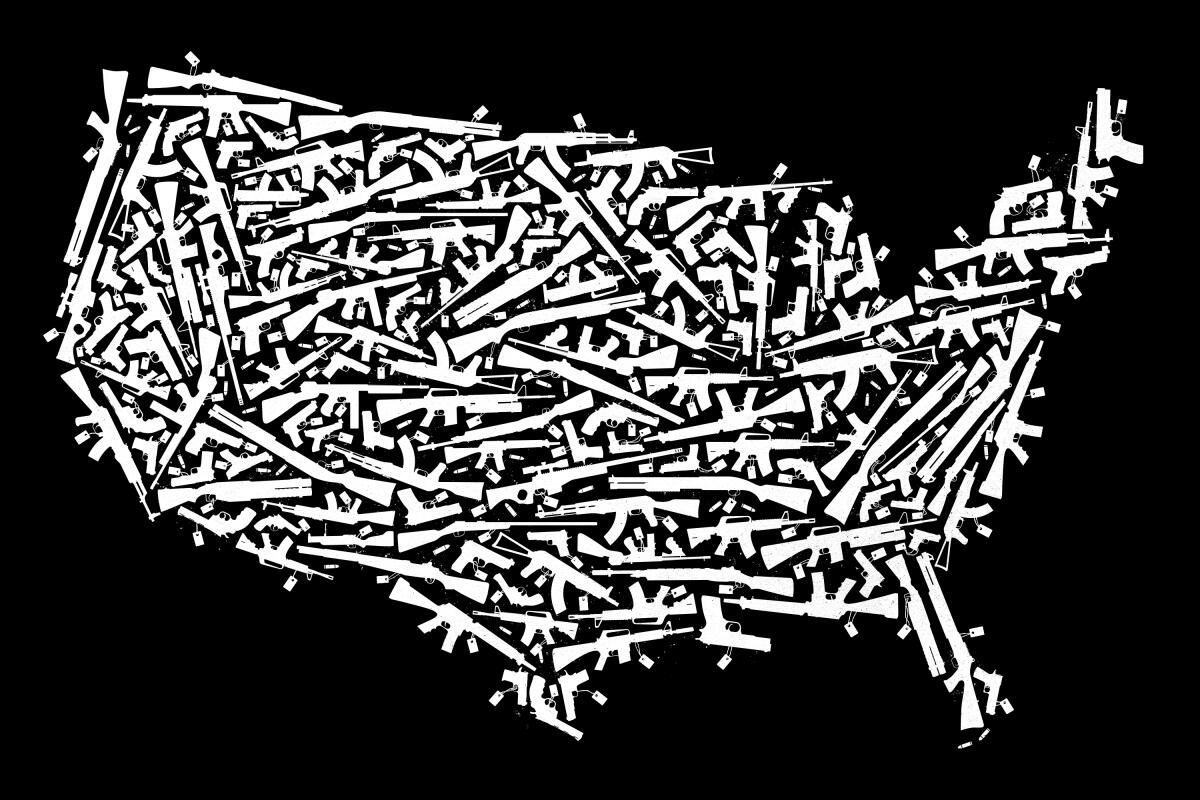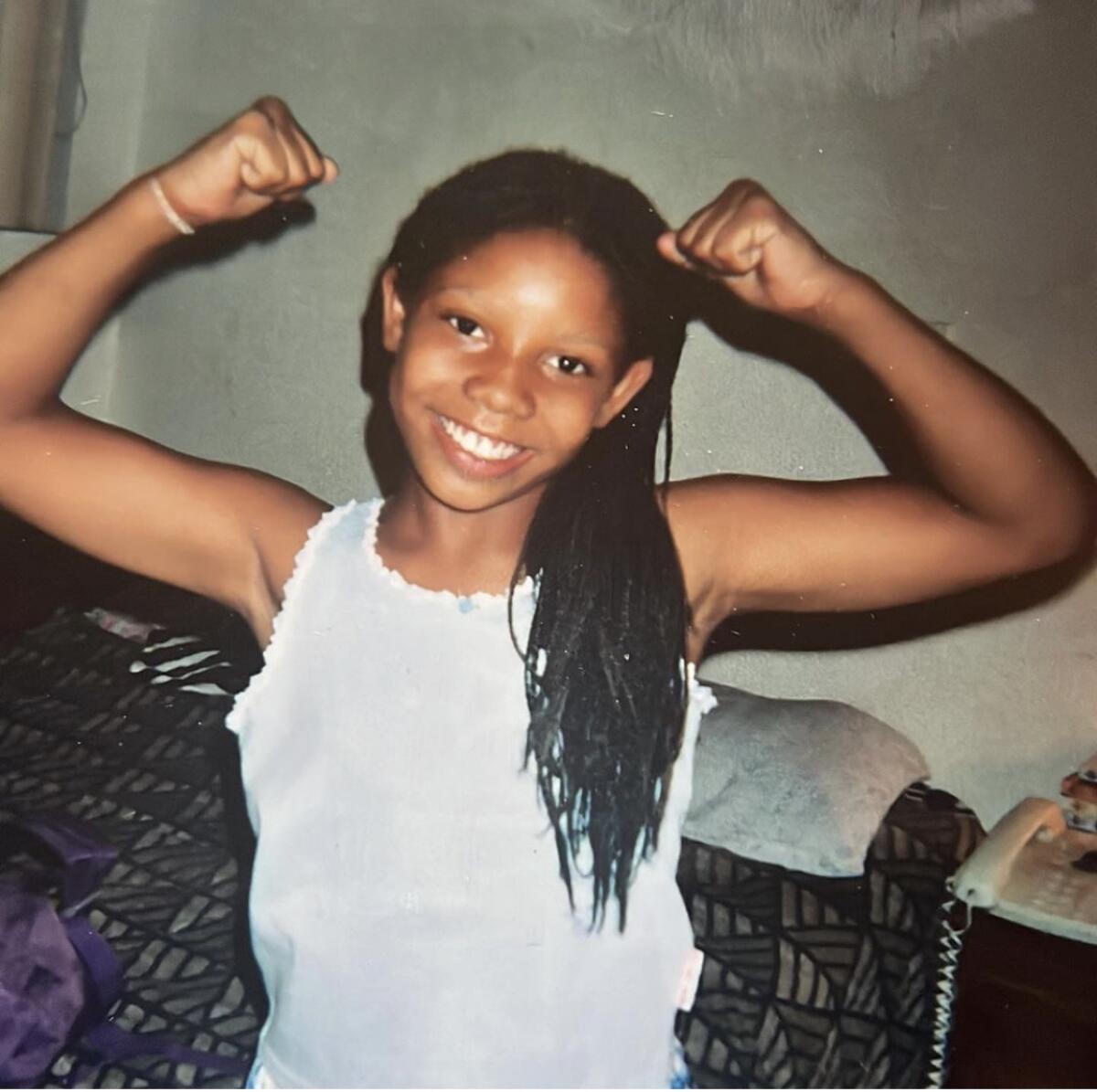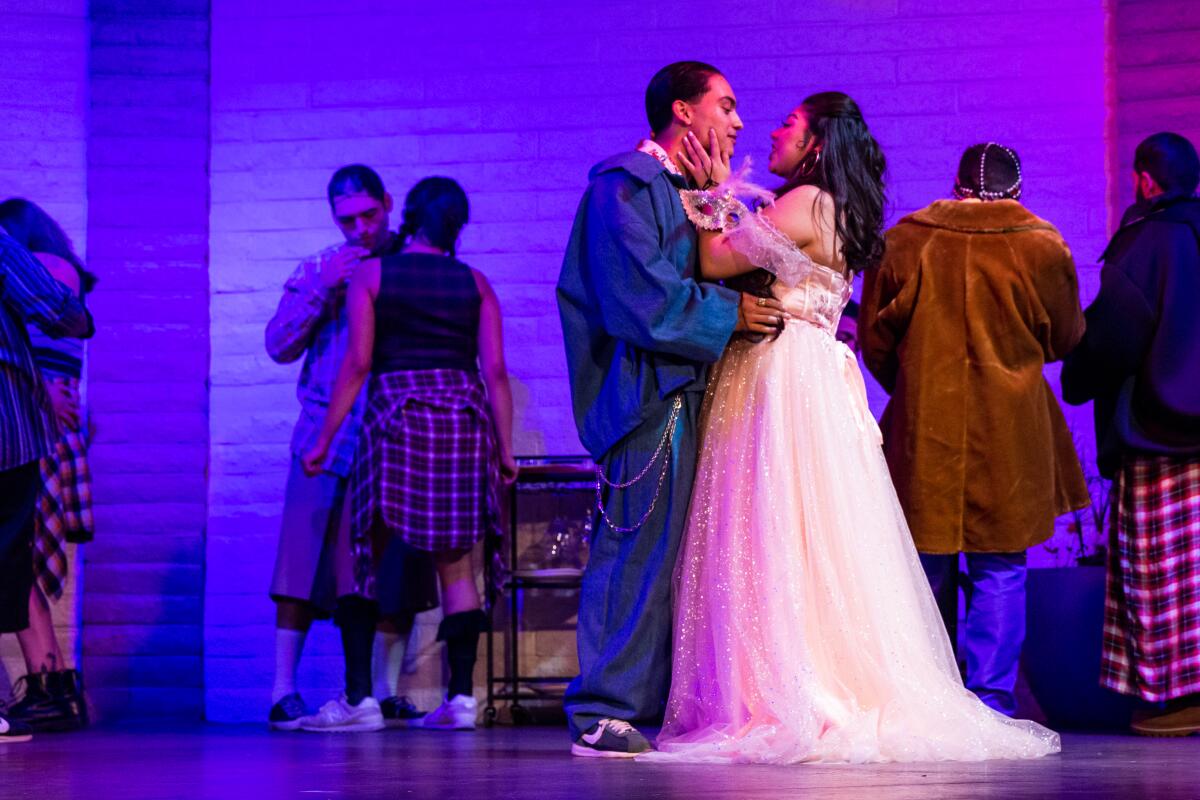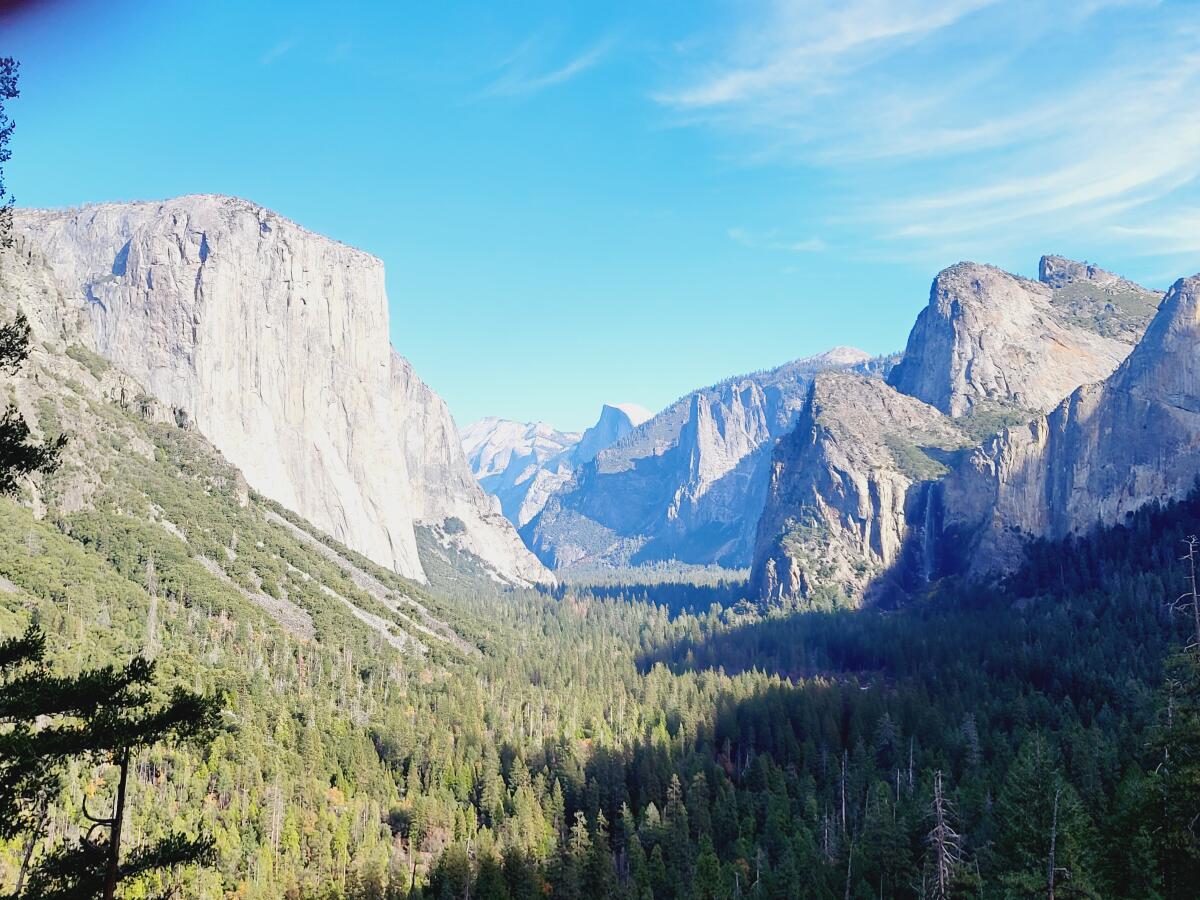The relationship between guns and crime isn’t simple. Neither was the reporting

- Share via
Good morning. It’s Wednesday, Dec. 13. I’m George LeVines, deputy director of data and graphics. Here’s what you need to know to start your day.
- Exploring the complex relationship between firearm access and crime
- 23 probation staffers taken off the job amid sex abuse allegations
- The untold stories behind some of the greatest songs
- And here’s today’s e-newspaper
Sign up for Essential California
The most important California stories and recommendations in your inbox every morning.
You may occasionally receive promotional content from the Los Angeles Times.
Exploring the complex relationship between firearm access and crime
For professional communicators, journalists are terrible at telling readers how and why they do what they do. I’ll try anyway.
Last year, Los Angeles Times reporters set out to determine the relationship between gun dealers and gun violence. More dealers, more guns, more violence — right? That’s what they expected to find.
Speedbump.
With few exceptions, data reporter Gabrielle LaMarr LeMee found a small, inconsistent relationship between increased presence of gun dealers and gun violence. The underwhelming national result surprised her and investigative and enterprise reporter Connor Sheets.
It took the reporters months to get to that conclusion and it upended most of their future reporting.
The findings required new questions and a better understanding of how the business and its regulators operate. We started with some version of “how does an increase in gun dealers impact gun violence?” and an assumption that we’d show readers a simple map connecting the most violent areas to the most gun dealers. We ended with more questions that were increasingly difficult to answer:
- Given the limited effect, why is there an ongoing push to restrict dealers in California?
- How do guns travel from manufacturers to crime scenes?
- Where are regulations failing?
- Can we prove any of this with data?
Arming America is a project that explores gun access in the United States with a tilt toward California. The answers to our questions were not always straightforward, but reporters brought nuance, thoroughness and accuracy.
LaMarr LeMee and Sheets dug through hundreds of pages of reports, spent hours talking with gun dealers, filed numerous federal, state and local public records requests, and compiled and analyzed the available data. Over and over again, obstacles blocked the path forward. The research was limited by laws that specifically restrict public access to even basic information about gun sales and gun crimes.
In the end, one finding stood out to me in particular: Significantly reducing gun violence by reducing gun dealers would require unprecedented levels of regulatory coordination across city, county and perhaps even state lines — so unprecedented that it is probably not realistic.
In Los Angeles County, for example, it would mean more than 160 cities across the county and four neighboring counties combining efforts to dramatically reduce the number of gun retailers in the region, nearly 35,000 square miles.
The series takes on three aspects of gun access: 1) The efficacy of restricting gun dealers, 2) Illegally trafficked firearms that wind up at local crime scenes, and 3) Parallel challenges to both opening and shuttering a gun store in Southern California.
In the aftermath of the lunar new year shooting in Monterey Park, I wanted the series to challenge common tropes in media coverage and push beyond mass shootings that dominate headlines but make up an overwhelming minority of total gun deaths. We sought to avoid reductionist dialog — “ban all the guns vs. they’re gonna take all the guns.”
I hope this series enlightens your next conversation about an issue that touches more lives every day.
Today’s top stories

Courts and crime
- Kids complained for years about sexually abusive probation officers. Some of them still work for L.A. County.
- Los Angeles Police Chief Michel Moore has “serious concerns” about how an officer was driving just before her patrol car struck and killed a pedestrian.
- The woman who accused former San Diego State punter and NFL hopeful Matt Araiza of raping her at an off-campus party in 2021 has agreed to drop him from a civil lawsuit.
- It is unclear how — or why — a Russian man got onto an international flight to LAX without a passport or a ticket.
Housing
- SoCal housing crisis makes commutes worse for many. But the rich get a traffic break.
- Santa Cruz is California’s least-affordable housing market. Are high-rises a solution?
Business in Hollywood
- Netflix releases a trove of viewership data for 18,000 shows. What does it tell us?
- E3, Los Angeles’ once-mighty video game convention, was officially canceled after two-decade run.
- Hollywood’s animation workers are unionizing at a rapid pace. Here’s why.
Local politics
- Jackie Goldberg remains president with a lack of rancor or drama. But financial and academic challenges loom, while pending elections will change the make-up of the Los Angeles Board of Education.
- Andrea Alarcón, the mayor pro tem of Palmdale, was arrested in Glendale on suspicion of drunk driving, of which she has been convicted previously.
- Huntington Beach is sticking it to ‘woke’ California. Some residents ask at what cost.
More big stories
- Some pregnant patients who were eager to get vaccinated to protect their babies against RSV instead met with obstacles.
- State regulators found mold, broken toilets and missing fire safety records in L.A. County jails.
- Campus Palestinian allies demand UC board chair resign, citing ‘one-sided’ social media actions.
- An adorable ocelot kitten is born at L.A. Zoo. Here’s when you’ll be able to meet him.
- A fire guts the historic California Yacht Club in Marina del Rey.
- Eighteen California children are suing the U.S. Environmental Protection Agency for allegedly violating their constitutional rights by allowing fossil fuel pollution.
- The Ace Hotel in downtown Los Angeles is closing its doors in January.
- How much the Shohei Ohtani contract will cost the Dodgers over the next 10 years.
Get unlimited access to the Los Angeles Times. Subscribe here.
Commentary and opinions
- Sammy Roth: I spent a week in Montana coal country. Here’s what surprised me.
- Jonah Goldberg: Trump’s “Day One” dictator comment is a sad symptom of populist politics.
- Opinion: When libraries like Gaza’s are destroyed, what’s lost is far more than books.
- Michael Hiltzik: This porn company makes millions by shaming porn consumers.
- Frank Shyong: L.A.’s legacy business program opens soon. But it’ll be too late for Little Tokyo’s Suehiro Cafe.
- Mary McNamara: For high schoolers and parents, junior year is the worst. All you can do is survive it.
- Robin Abcarian: Believe Trump when he vows revenge on the media. MAGA shock troops are already on the attack.
Today’s great reads
They spent big to be B Corps. Now they’re questioning the do-good corporate status symbol. Businesses pay thousands of dollars to be certified as B Corps, signifying to consumers that they are “forces for good.” Now some B Corps are raising questions about the certification process.
Other great reads
- Tamron Hall wants to keep the tradition of daytime talk alive.
- How Taylor Swift, Beyoncé and Disney made “fun-flation” the economic buzzword of 2023.
- How we can break the cycle of intergenerational trauma.
- This Santa Ana home draws hundreds of Virgen de Guadalupe devotees each year.
- Israel’s crackdown has soured the West Bank’s economy. Just ask its sweets makers.
How can we make this newsletter more useful? Send comments to [email protected].
For your downtime

Going out
- 🎭 “Romeo and Juliet: Rolling Through East L.A.” gives former gang members a second chance.
- 🎀 🎤 Calling all Barbz! Nicki Minaj announces “Pink Friday 2” tour — including one SoCal stop.
- 🎨 William Blake was called a “lunatic” in his lifetime. The Getty hails him as a visionary now with 104 of his works currently on display at the museum.
Staying in
- 🎵 The untold stories behind some of the greatest songs of the 1970s and beyond.
- 📖 A billionaire and a novelist offer two versions of tech’s future. Who’s right?
- 🧑🍳 Here’s a recipe for pignoli cookies.
- ✏️ Get our free daily crossword puzzle, sudoku, word search and arcade games.
And finally ... a great photo
Show us your favorite place in California! Send us photos you have taken of spots in California that are special — natural or human-made — and tell us why they’re important to you.

Today’s great photo is from Jeff Stuckhardt of Newport Beach: Yosemite National Park. Jeff writes:
“I have traveled to 76 countries in the world and have seen incredible natural beauty, however, Yosemite National Park is the most majestic of all!”
Have a great day, from the Essential California team
George LeVines, Deputy Director of Data and Graphics
Elvia Limón, multiplatform editor
Kevinisha Walker, multiplatform editor
Laura Blasey, assistant editor
Karim Doumar, head of newsletters
Check our top stories, topics and the latest articles on latimes.com.
Sign up for Essential California
The most important California stories and recommendations in your inbox every morning.
You may occasionally receive promotional content from the Los Angeles Times.





